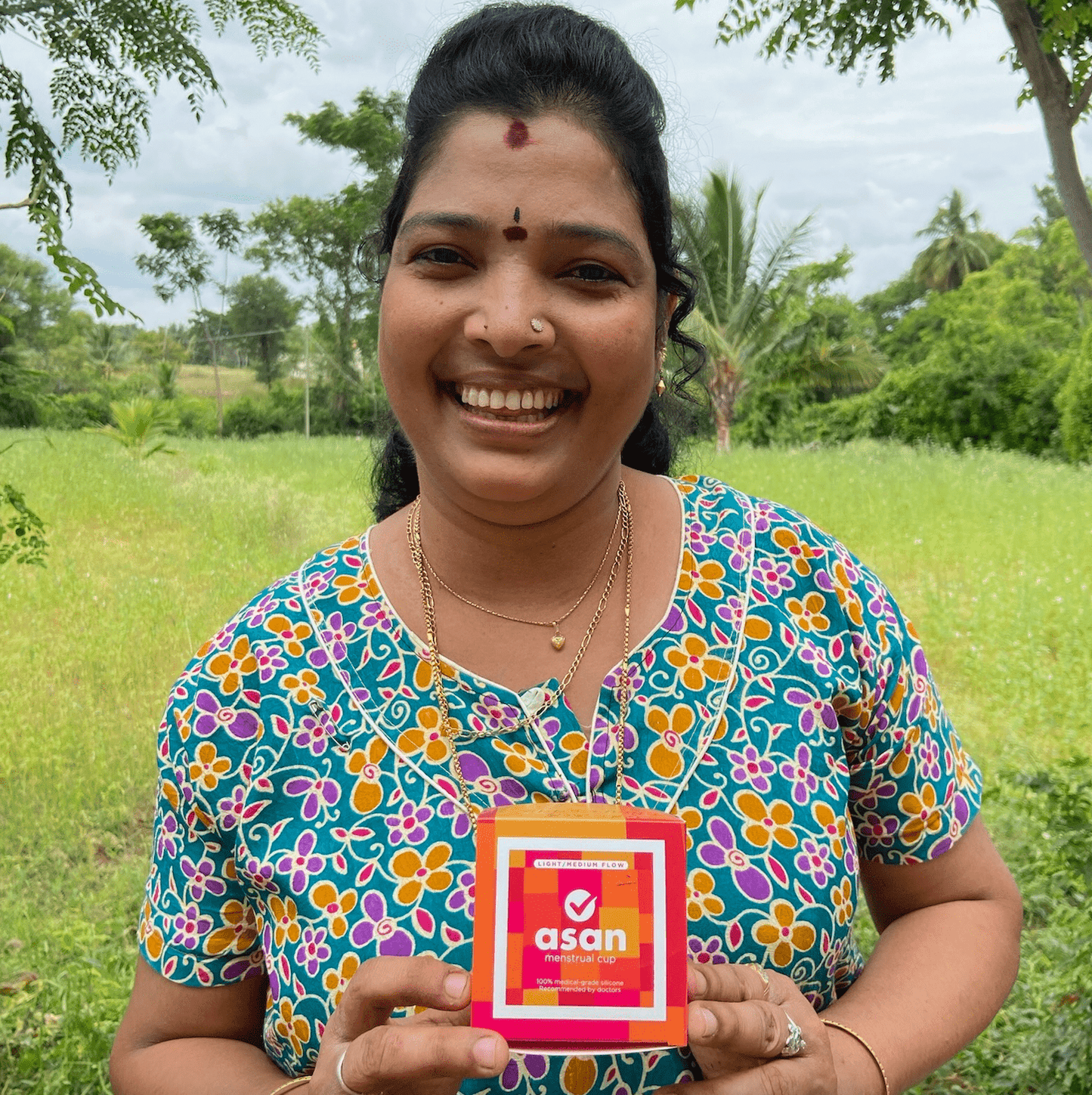Are you thinking of starting a social enterprise or business with a strong social purpose?
Asan was founded in 2021 with the mission to end period poverty globally. In this article, Asan’s founder Ira Guha talks through the top 5 challenges of being a social enterprise founder – from structuring the organisation to raising finances and measuring social impact.


First things first – what is a social enterprise?
A social enterprise is a business that exists to achieve a social or environmental purpose.
Unlike a charity, a social enterprise is at heart an enterprise – which means it sells a product or service to make money.
However, unlike a traditional business which exists primarily to make a profit, a social enterprise has a dual mission design – it needs to make profits whilst also having positive social and environmental benefits.
Wouldn’t it be nice if every business was a social enterprise? While this sounds like the ideal business structure, in reality it comes with many trade-offs and challenges – which is why social enterprises can be hard to scale.
Read on to learn more about building your dream social enterprise!
Challenge #1 - Building your organisation structure
Organisation structure refers to the legal framework that underpins a social enterprise.
In the UK, many social enterprises are registered as “CICs” or community-interest companies. A CIC must have a clear community-centered purpose in its articles of association, and all profits must be reinvested into the business or used for community benefit. Other countries have similar structures available, such as Section 8 Companies in India.
That said, it is not necessary for a social enterprise to be registered as a CIC or Section 8 Company. Many social enterprises are registered as pure for-profit companies (such as private limited companies), or even as non-profit organisations.


Funding can play a part in determining your social enterprise structure. If you are primarily reliant on business revenue (such as sale of goods) or on equity investment, then a for-profit structure is more suitable. Alternatively, if you are primarily reliant on grants, then a not-for-profit structure may be more appropriate.
It is also common to have a hybrid business structure, with one or more for-profit and not-for-profit entities. For example, Asan operates as a for-profit company, but has a close partnership with its sister non-profit, Action Foundation for Social Services.
Before registering your social enterprise, it is important to consult with legal and tax advisors to determine the best structure based on your mission, vision and geographic location. It’s important to get the structure right, as this can be tricky to reverse in the future!
Challenge #2 - Balancing social mission and finances
This might be the hardest part of running a social enterprise! You have to be financially sustainable, or your organisation will cease to exist. But at the same time, you may have to sacrifice profit in order to further your social mission.
Let’s take the example of a hospital with a mission to provide high quality healthcare to poor residents in an underserved community. If they cut pricing so that it is extremely affordable, they may not be able to make a profit and cover their costs. However, if they increase their prices, they may shut out the poorest members of the community – which goes against their social mission.


Innovative models are often required to balance social impact and revenue in social enterprises. One example of this is a cross-subsidy model. If the hospital charges higher prices to high-income patients, it may be able to cover its costs, so it can offer subsidised or free healthcare to low-income patients.
Another example could be flexible financing models, such as allowing marginalised patients to pay in installments over time. Social enterprise founders have to invest time and effort into experimenting and refining these models, which can often change over time!
Challenge #3 - Access to suitable finance
What funding challenges do social enterprises face?
Social enterprises are stuck in a challenging “middle” ground – they are often not profitable or large enough for commercial investors, but at the same time do not meet the criteria required to receive grant funding destined for NGOs.
Again, this is where social enterprise founders need to get creative. Hybrid organisation structures (such as combining for-profit and non-profit entities) can open up opportunities for both commercial investment and grant funding.


The good news is that there is now a growing pool of social impact investors, who understand the unique challenges of running a social enterprise, and are willing to provide patient capital. This involves longer-term, flexible investments that can be repaid if and when your social enterprise makes a profit.
Debt investment is also an option, as there are impact investors willing to give low interest debt to social enterprises.
Challenge #4 - Stakeholder alignment
Aligning different stakeholders is absolutely essential when running a social enterprise.
Because of the dual mission that involves both profit and purpose, different stakeholders can have different visions and priorities. This can result in organisational tensions unless they are dealt with in advance.
For example, investors and finance officers may be focused on financial returns, whilst social impact teams and grant funders may be more focused on prioritising impact over returns.


As the founder of a social enterprise, it’s critical to be transparent about priorities and your personal vision. It’s also important to consult with mentors and advisors, and to appoint a strong board of directors or advisory board. This can help navigate tensions between different stakeholders.
Challenge #5 - Measuring social impact
Surely all social enterprises have a positive social impact?
Not necessarily! Unless you can clearly measure and quantify the impact of your organisation, you cannot assume that it is having a positive impact.
For example, your social enterprise may be donating used textbooks to underserved schools. However, if these are out-dated, or are the wrong language or not fit for purpose, they may not actually be used by students. The impact isn’t the number of books that were donated, but the improvements in educational outcomes that were generated by this donation.


Non-profits are often under pressure to create detailed impact reports, as these are required by grant funders. However, for-profit social enterprises that generate their own revenue are not required to report their impact to the same extent.
The onus of measuring impact is therefore on the founders or organisation leaders. Accreditations such as B-Corp can be helpful here as they provide templates and requirements for measuring impact across your supply chain, customers, beneficiaries and the planet.
Conclusion
In summary… managing growth in a social enterprise is never an easy task, but it can be extremely rewarding!
With the right organisation structure, financing model and stakeholder alignment, social enterprises can be both profitable and hugely impactful on both society and the planet.
To learn more about Asan’s social impact model, including our 1-for-1 donation scheme, click here.

asan store
Donate a Cup!







More Posts
View all-

Top 5 books to learn about your body
Curious to learn more about your body but not sure where to start? This blog rounds up 5 insightful books that make anatomy, health, and womanhood easy to understand and...
Top 5 books to learn about your body
Curious to learn more about your body but not sure where to start? This blog rounds up 5 insightful books that make anatomy, health, and womanhood easy to understand and...
-

Top 5 challenges of being a social enterprise founder
Starting a social enterprise is exciting but not without challenges. In this blog, Asan’s founder shares the top 5 hurdles - from structuring your organisation and accessing suitable finance, to...
Top 5 challenges of being a social enterprise founder
Starting a social enterprise is exciting but not without challenges. In this blog, Asan’s founder shares the top 5 hurdles - from structuring your organisation and accessing suitable finance, to...
-

Is it safe to take period delay pills?
Thinking of delaying your period? This guide explains how period delay pills work, what to watch out for, and how tracking your cycle can make planning easier.
Is it safe to take period delay pills?
Thinking of delaying your period? This guide explains how period delay pills work, what to watch out for, and how tracking your cycle can make planning easier.
-

What are the stages and symptoms of menopause?
Menopause is a natural transition, but it can bring a mix of changes to your body and mind. This blog covers the stages, common symptoms, and simple tips to help...
What are the stages and symptoms of menopause?
Menopause is a natural transition, but it can bring a mix of changes to your body and mind. This blog covers the stages, common symptoms, and simple tips to help...




